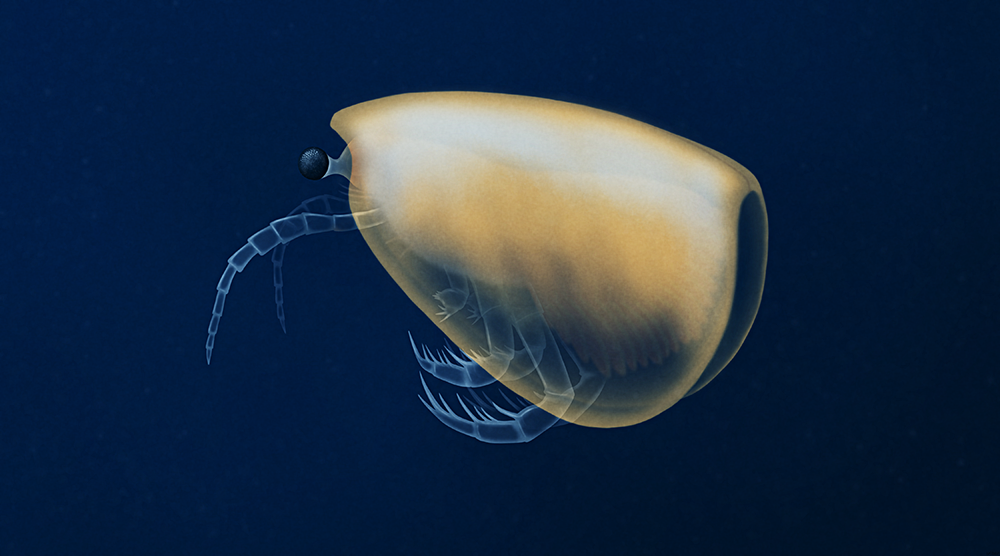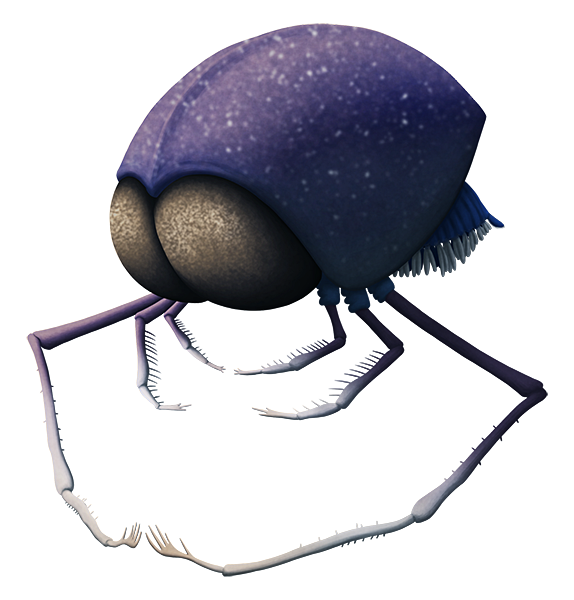Thylacocephalans were a bizarre group of extinct marine arthropods that often looked like tiny alien creatures – and whose evolutionary relationships are still uncertain. Despite existing in oceans around the world for at least 350 million years, their fossil record is rather spotty and their internal anatomy is often poorly preserved, making it difficult to figure out anything more specific than “probably some sort of crustacean“.
Possible thylacocephalans are known from as far back as the Cambrian, but one of the earliest definite members of the group was Thylacares brandonensis.
Living during the early Silurian, around 436 million years ago, in the region that today is part of Wisconsin, USA (found in the same fossil formation as last week’s Venustulus), this species measured up to about 7.5cm long (3″). Its body was enclosed by a large bivalved carapace, with protruding stalked eyes and what may have been a pair of antennae, along with smaller raptorial limbs than its later relatives.
While it was less specialized than other thylacocephalans it was probably a similar sort of swimming predator, catching prey with its spiny limbs.


